I am often asked what galley equipment is necessary when you set up for a life on the water. Whilst the answer to this question largely depends on how much space you have and what kind of meals you like to prepare, I am going to take my love for the pressure cooker to the next level and say that this particular piece of galley equipment is one of those “must-have” items.
I say so with a sheepish smile because I had mine for 2 whole years before I plucked up the courage to actually use it. Yes, you read that right, and my extensive research of the item in question reassured me that I was not alone. Far from it. You see, it seems that the Pressure cooker sits on the extremes. You either use it and love it, or you don´t and fear it. For way too long I feared mine. When I eventually blew the cobwebs off it, I discovered the game-changing possibilities of the pressure cooker. In this article I share with you my personal experience and insights of an often misunderstood and totally undervalued piece of galley equipment
I use my pressure cooker almost daily, and it has marked a turning point in my culinary adventures at sea. The compact design and versatility of this slightly retro cooking apparatus immediately appealed to the constraints of boat life.
So, what is a pressure cooker?
Well, there are two main types that you can find on the market today, a traditional stove-top pressure cooker and the newer electric pressure cookers or instapots as they are often called. They work in fundamentally the same way, using a build-up of steam pressure to raise the temperature above boiling point and force liquid into ingredients, which in turn reduces the time needed to cook the food.
Given that not every boat has the electrical capabilities to use an instapot (especially mine!) I refer to the stove top pressure cooker in this article.
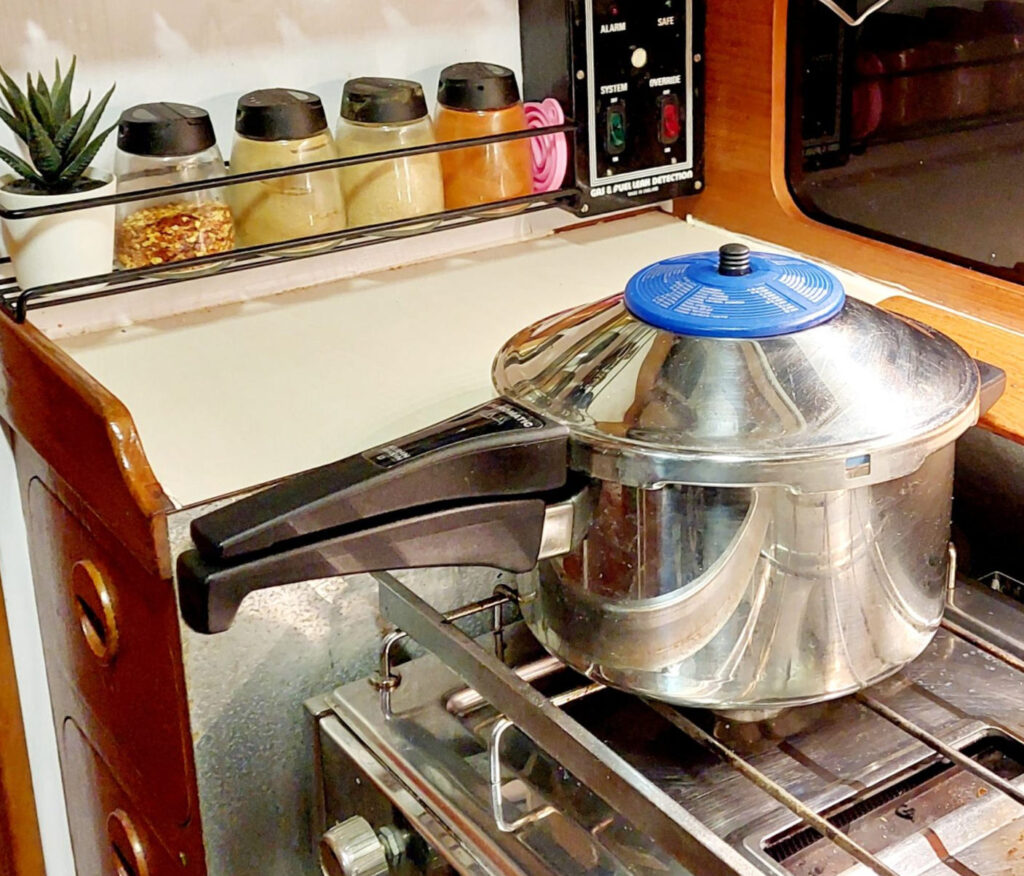
Why is it such a good item to have on a boat?
One of the first lessons I learned when I eventually plucked up the courage to use mine was the incredible time efficiency of pressure cooking. Whether at sea or at anchor this stainless-steel pan became my ally in whipping up quick, nutritious and delicious one-pot wonders among other dishes. It also ticks all the boxes that I look for when justifying a galley equipment addition.
1. Safe for use at sea
Cooking during rough seas tested both my sailing and culinary skills. Adjusting cooking times and carefully monitoring the pressure cooker ensured that even in challenging conditions, I could deliver a hot and comforting meal. Thanks to its sealed lid system, there are no spillages or flying lids!
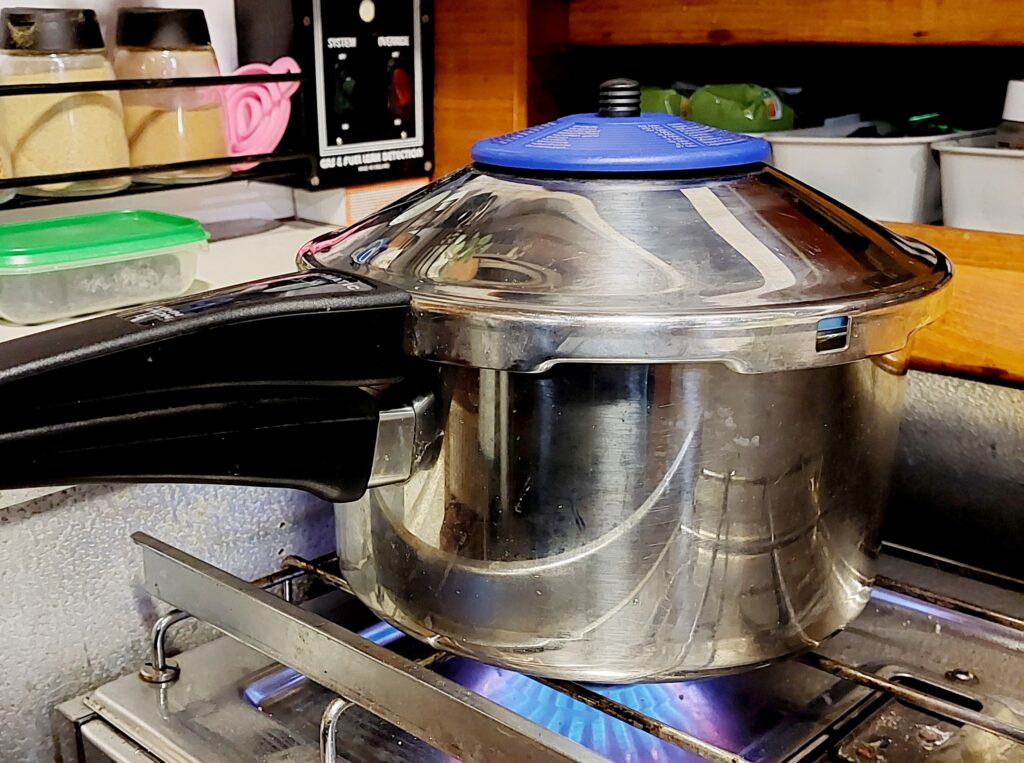
I have not found any reliable exploding pressure cooker articles and, in the knowledge that today’s models have built-in safety features with locked lids and pressure valve to release steam if the pressure gets too high, I certainly feel assured while I am cooking.
That said, it is essential to follow safety guidelines when using a pressure cooker. Ensure that the cooker is properly sealed, release pressure cautiously, and never open the cooker until it is safe to do so.
2. Low energy consumption
Pressure cookers cook food faster than traditional methods by trapping steam and increasing pressure. Kuhn Rikon (a Swiss pressure cooker brand, which happens to be the one I use – no paid link) state that cooking with a pressure cooker uses 70% less energy. This can be particularly useful on the boat where we are always trying to be mindful of the energy we consume and especially in more remote areas where gas is harder to source.
3. Time saving
Given how the pressure cooker works it can cook pasta or rice in 5 minutes, soaked chickpeas and beans in 15- 20 minutes, plant-based stews, and curries in 5 minutes. For those who cook meat it also means you can enjoy those recipes that call for long hours in the oven or slow cooker using minimal gas.
The added advantage of using a pressure cooker on passage is that I know that I don´t have to be downstairs for any length of time keeping my eye on the stove. Once it has reached the desired cooking time, I can switch of the gas and leave the pressure to release naturally. In a hot and humid anchorage, I can cook ingredients relatively quickly without heating up the cabin (and myself!) too much.
4. Low water consumption
When using a pressure cooker you are limited to the amount of water that you can put in the pan as it should never be filled more than 2/3rds full. Given the nature of how food is cooked in the pressure cooker there is always liquid which makes it easier to empty and cleaning can be done with a quick wash and rinse if making plant-based foods. If cooking meats, then you will need to use more water and detergent to get rid of the grease.
5. Low maintenance
Most modern pressure cookers are made from stainless steel, this makes them durable and easy to clean. Rinsing the pressure cooker with freshwater and conducting routine maintenance ensures its longevity, preventing the corrosive effects of salt air.
6. Preserves nutrients
The reduced cooking time in a pressure cooker helps in preserving the nutritional content of the food better than other methods that may involve prolonged cooking. It is great for steaming vegetables too, which really helps lock in those valuable nutrients. I believe this is a big advantage of cooking with a pressure cooker and am not the only one.
The New York Times bestselling author, physician, and internationally recognized speaker on nutrition. Dr. Michael Greger states the following in his nutrition “Researchers have found that pressure-cooked beans have six times the antioxidant levels of boiled (pre-soaked) black beans. When the Researchers looked at a variety of methods—e.g., 12 minutes of boiling, 5 minutes of pressure cooking, and 6 minutes of microwaving carrots—they found that cooking increased their antioxidant potential, and pressure cooking nearly doubled their antioxidant value.
As I am dedicated to ensuring my family and clients get optimal nutrition to support the active water-based lifestyle it is no brainer for me to cook as much as I can with the pressure cooker.
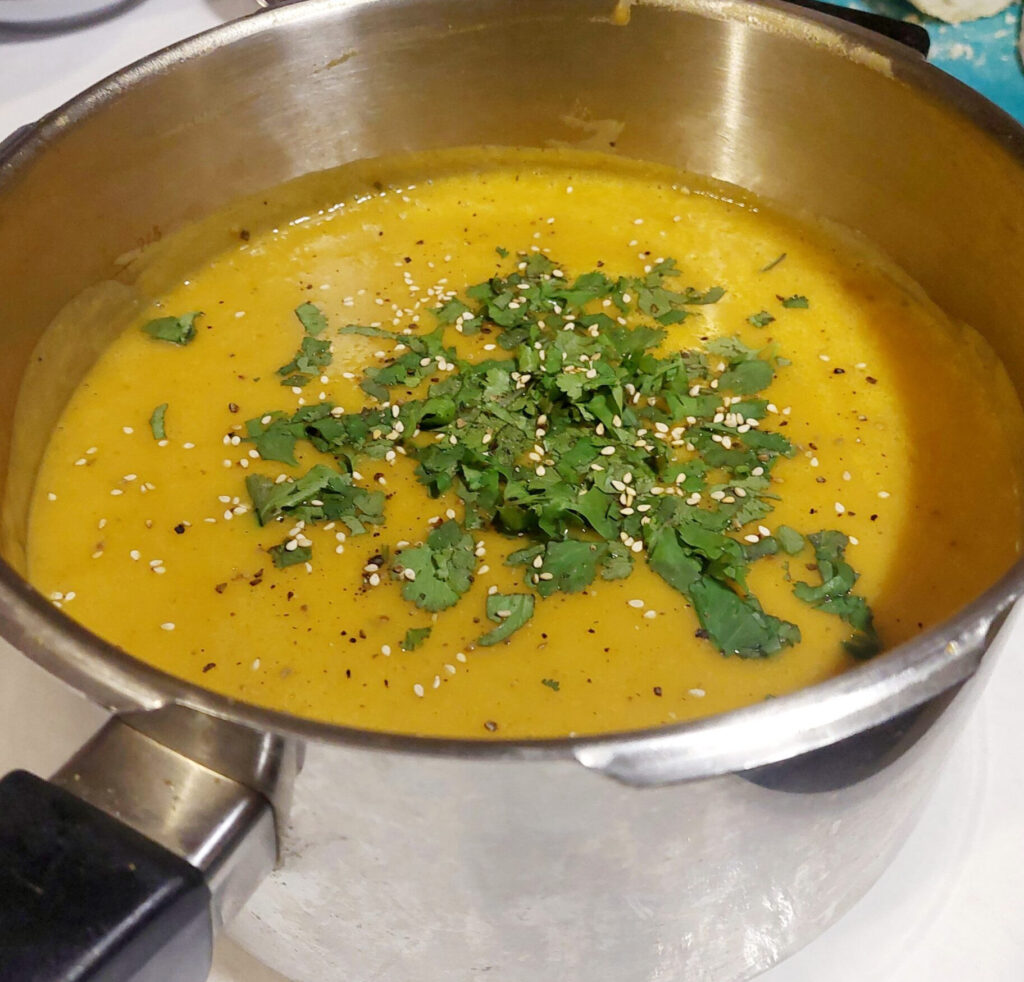
What should you look for when purchasing a pressure cooker?
So, if you like what you have read so far and think a Pressure Cooker is the perfect addition to your galley, here is a quick list of things to bear in mind when purchasing one.
1. Choose high quality
For this kind of item quality and safety go hand in hand but equally that doesn´t mean that you have to spend a lot of money. I suggest buying one from a reputable brand as this item is built to last and you should get decades of use out of it.
2. Stainless is best
I recommend buying a stainless steel one as they are easy to clean, and low maintenance. Stainless steel is non-reactive to acidic and salty food items, making pressure cookers made of stainless steel a healthier choice. Given that stainless steel conducts heat slowly, it makes it less likely to burn food which is both helpful and motivating if you are new to cooking with a pressure cooker.
3. Two handles are better than one
Make sure the pressure cooker you purchase has two handles. It makes it so much easier to lift and carry the pan especially whilst on passage.
4. Size is important
In this case, the smaller you can go for the better. Not only will your cooker have to fit neatly on your galley stove, but you also must be able to lift it comfortably when the boat is moving.
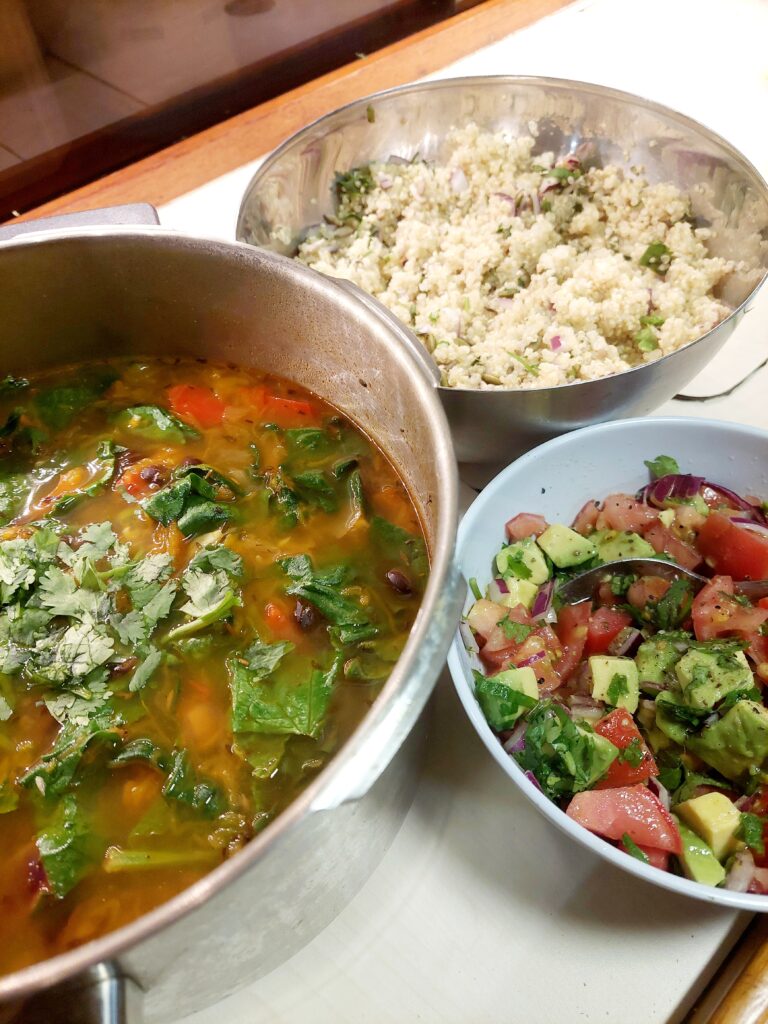
My Pressure Cooker is 7 Litres (7.3 quarts and 22cm (8.6 inch) diameter. It is great for the three of us and is enough for two meals. It sits well on the galley stove and there is even coverage of heat which is also an important part of using the pressure cooker correctly.
Conclusion.
In my opinion, it makes complete sense to have a pressure cooker onboard. Saving time and energy, it also offers a safe way to cook whilst sailing with the added bonus of knowing you will be getting the very best nutrition from the ingredients you cook.
If you are thinking of getting a pressure cooker, blow off the cobwebs of your underused pan or just interested in some new recipes to try out, then keep an eye out for my forthcoming articles detailing my favorite pressure cooker recipes.
Do you have one onboard? If so, I would love to know your how you find using the Pressure Cooker. Is it an essential item in your galley? If you don´t yet have one, are you interested in buying one?

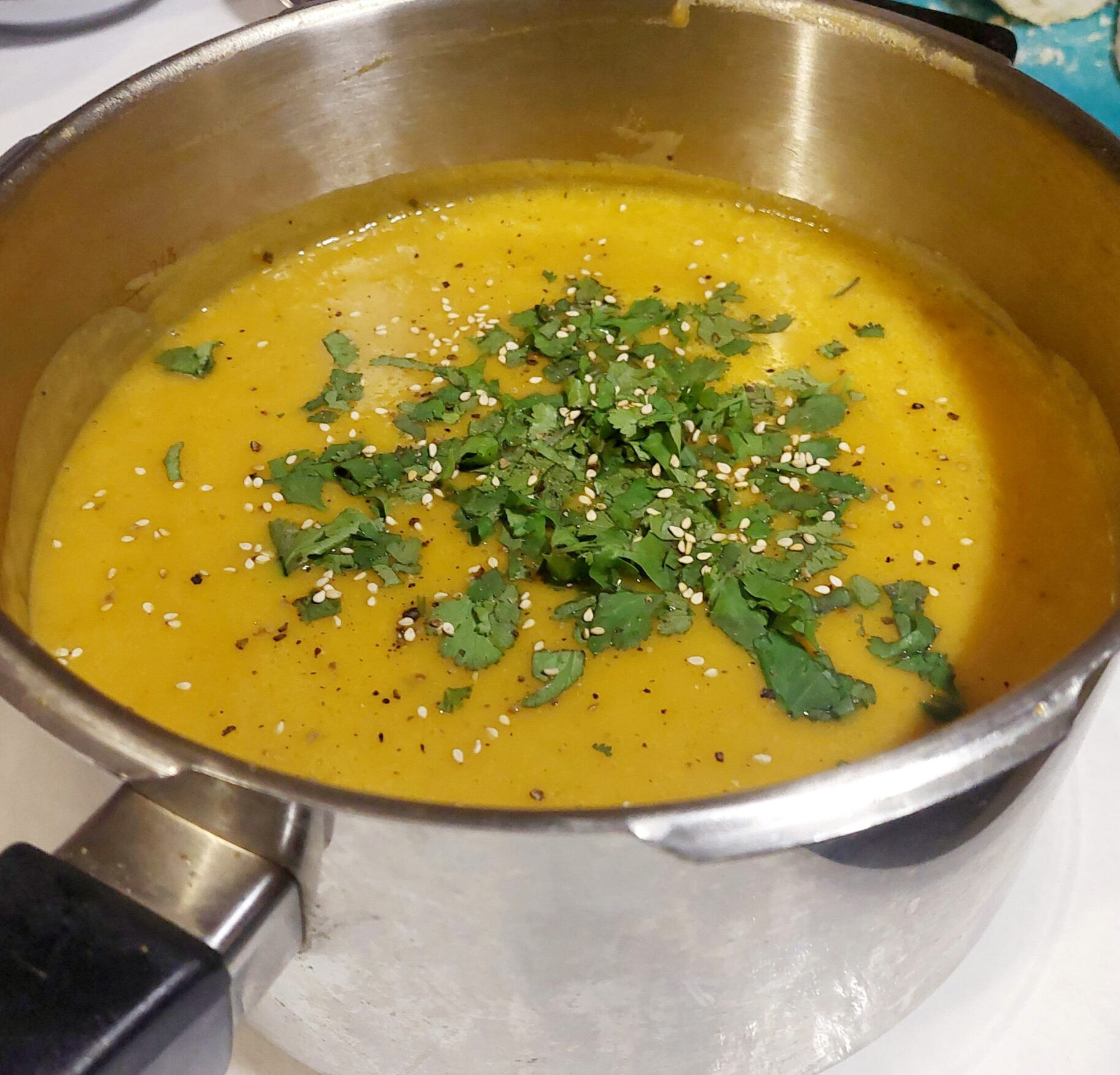




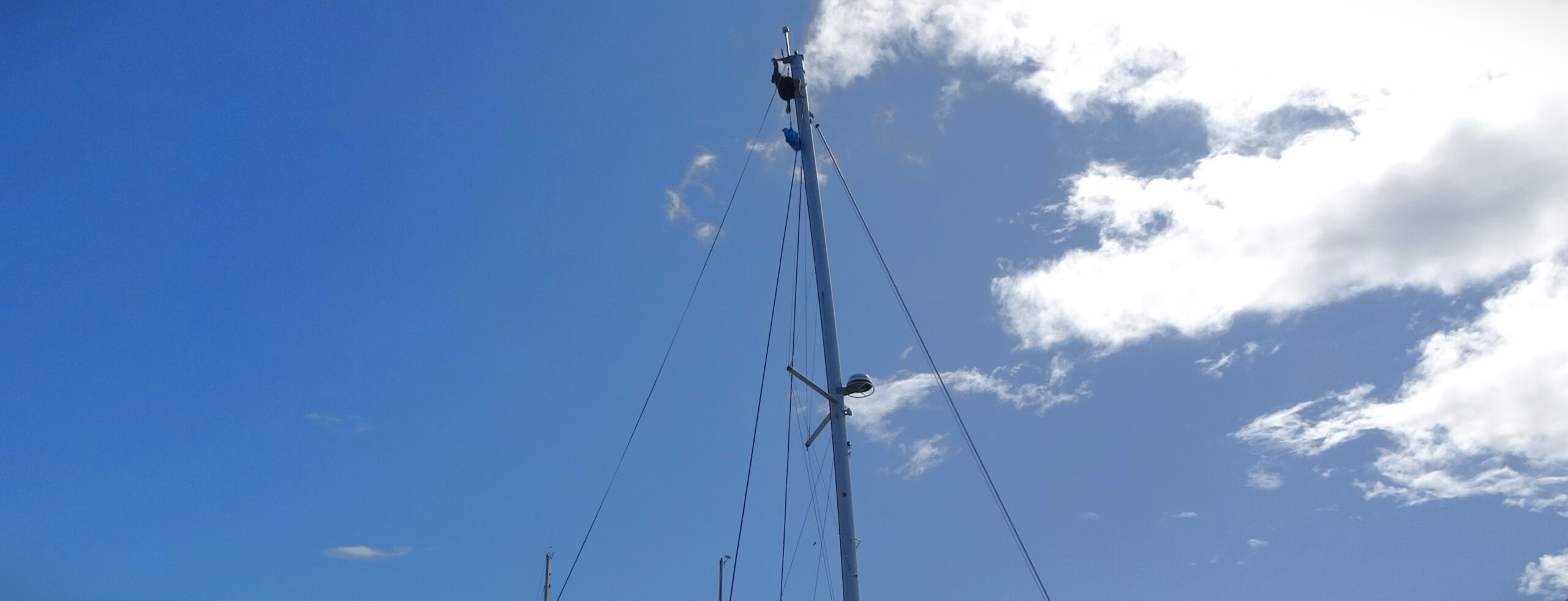
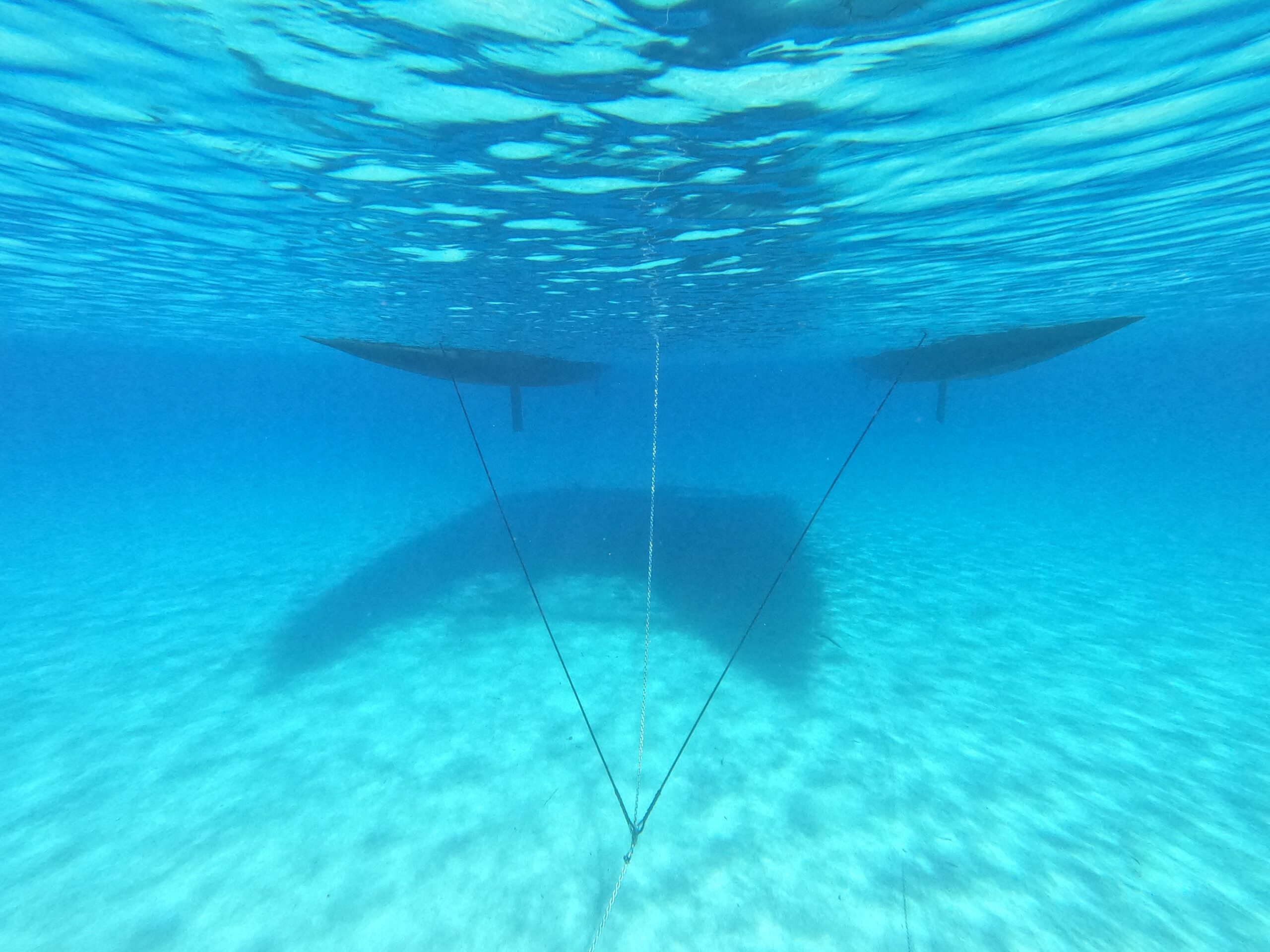
We love our Instant Pot Duo Mini 3qt pressure cooker. It uses only 700 watts of power and easily runs on our Victron Multiplus 3000 and did previously on our Xantrex SW2000. It also works as a slow rice cooker, steamer, and sauté.
It helps keep the cabin cool in the summer and reduce our propane consumption. We always take it outside to cool down and it stays cool on the outside. We use it probably 3-4x weekly!
Anyone who has adequate battery power and a properly sized inverter should strongly consider an electric pressure cooker.
Some people prefer electricity, other people prefer gas – it’s not only about the size of the battery bank and how good the inverter is, but also with what kind of electricity sources one is utilizing, how one uses the boat and personal preferences. With some more solar panels probably I would also consider the electric option, but as for now I’m very happy with my stove-top pot.
Having read a few reviewers on pressure cookers, we also invested and can clearly state it is a game changer!
Hi Liam, glad to here you are team Pressure Cooker too! They make so much sense onboard a boat and a lot more forgiving than I thought they would be which motivates me to experiment.
Hi Jason,
Thanks so much for sharing your electric pressure cooker tips on here. whether electric or gas I am convinced they save time and energy.
What are your favourite recipes?
I have not mastered the skill yet. Brand new, hardly used Tower stainless steel. It takes at least 20 minutes to build up any pressure. So time saving is minimal. Any tips would be valued. I wonder about. boiling water first but seems to defeat the object. 🤔
Hi Theresa,
I’m really sorry to hear your having issues with your pressure cooker. You are right 20 mins to boil water is not time saving. If I acces to hot water easily, then I always use that to save even more time.
If I can help I will! First of all, what size is it? Is the seal closing correctly? is there any steam coming out from under the lid?
if you send me over a short video of it from filling with water, closing the lid, and trying to bring to the boil then that would really help me troubleshooting.
You can send it via my socials see below or email smallvegankitchen@gmail.com
Love my pressure cookers. I even use them at home.
Recently purchased a new-to-me boat and wanted a new pressure cooker to go with it. Bought the MAGEFESA ® Prisma 4.2 + 6.3 Quart on Amazon, which has two different nesting pots with one lid. Not as many features as my old one (Calphalon), but I don’t need to be able to set pressure, so I think it is great as it is! Lot’s of safety features built in. I find I use the smaller size much more than the larger, but it’s nice to have the option.
I’m working on getting better at meal prepping and a pressure cooker is an invaluable tool.
Hi Steve,
I totally agree! Galley or Kitchen a pressure cooker is a must!
The one you purchased sounds fantastic!
I am sure you will be making some delicious meals in it!
Thank you for this article!
When reading it, I was very quickly convinced that it’s an excellent idea. It took some months from I read it until I finally managed to buy a pressure cooker … and then I haven’t been making much food on board after that, so I still don’t have that much experience with it, but so far I love it!
I believe there is at least a point 7 to be added to the list of advantages, you’re briefly touching it in point 2 and 3. I don’t want steam in my boat. It’s not about the heat – especially in the winter time it’s important to keep it dry in the boat, steam will condensate on the windows and create moist problems on various places. With ordinary boiling, once the temperature reaches 100C, all extra heat applied to the food will transform water into steam, and unfortunately the minimum heat from my gas stove generates a lot of heat. Already before purchasing the pressure boiler, for things that should boil for long, I tended to turn off the gas, cover the pot with some textiles to retain the heat better, and let it sit for a while, reheating it until it’s boiling every tenth minute or so. It’s so much easier with the pressure boiler!
Perhaps there is a point 8 as well. One of my crew complained that he was unable to cook rice without burning it on my gas stove. I haven’t collected enough experience yet to say for sure, but I do believe that it’s easier to avoid burning food with a pressure cooker (because one ends up having things standing on the heat for less time, and because things continue boiling even after one has turned off the gas).
Tidbit: There are actually (at least) three types of pressure cookers. For usage at home, my wife bought a plastic pressure cooker meant to be used in the microwave oven.